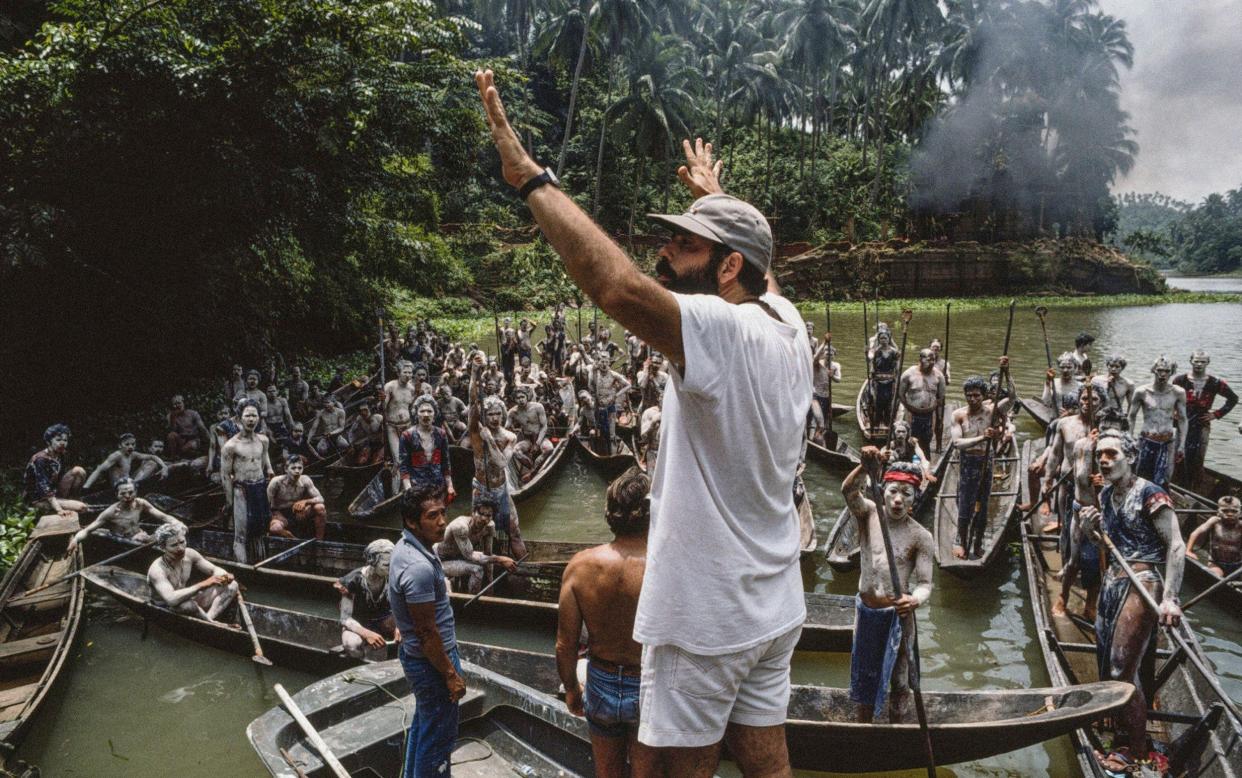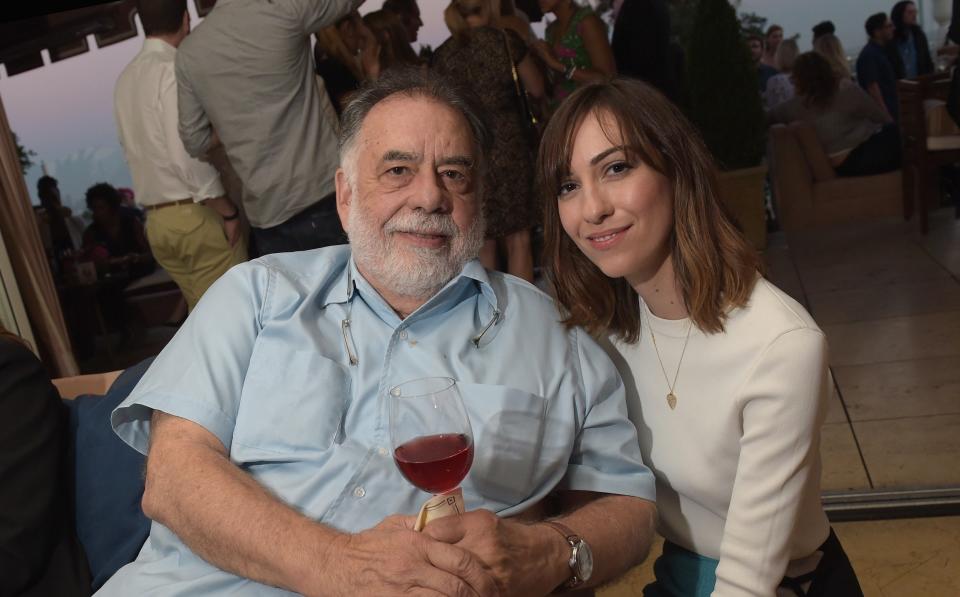Melting cocaine, volcanic lairs – the real-life hell of Apocalypse Now

Earlier this year, Francis Ford Coppola stood on the set of Megalopolis and looked up at two steel beams dangling high above the studio floor. His face was lit in shades of pink and blue from a sunset – emblazoned across an enormous LED panel encircling the scene. Turning to a younger woman who was standing beside him, he asked: “Have you ever been in love?”
The beams were where the film’s central couple would meet for an illicit kiss, thousands of feet above the streets of New Rome; the future city setting of The Godfather director’s $120 million (£100 million) science-fiction opus. The two were played by Adam Driver, whose master builder Catiline has a bold vision for this damaged city’s future, and the British actress Nathalie Emmanuel, whose Julia is the daughter of Catiline’s staunch traditionalist nemesis.
“This is what it feels like to kiss someone you love for the first time,” Coppola told his companion. “In other words, even if that kiss happens on a subway, you’re still 10,000 feet in the air… metaphorically.” Still, metaphorical or otherwise, the height brought with it unexpected problems: not least the difference in stature between the two performers and the inherent wobble in Emmanuel’s high-heeled shoes as she walked across the swaying joist, a bouquet of flowers in hand, before Driver swept her up into his arms. Even so, Coppola had one stipulation. “It is important that they don’t wear harnesses when they’re shooting … So they can have the feeling when they kiss that they really can fall.” Filmmaking without restraints, creative or otherwise: that’s the Coppola method in a nutshell.
The above vignette is one of a handful of mouthwatering new details about Coppola’s long-stewing passion project unearthed by Sam Wasson in The Path to Paradise – a sizzlingly vivid and compulsive new book on (some of) the now 84-year-old director’s life and work. Wasson structures Coppola’s creative journey as a Dantean tramp from hell to heaven, with Megalopolis as the glistening destination and the set of Apocalypse Now – the steaming tranche of Filipino jungle that consumed his being and sanity for 16 months – as the infernal starting point. (The book’s title is drawn from a maxim – “The path to paradise begins in hell” – often attributed to the Italian poet.)
But unlike Dante’s exit from the inferno, this is no straightforward journey up and out. Instead, playing with chronology, Wasson keeps casting Coppola back into his personal abyss every few pages or so, as if he’s James Bond falling down a series of trap doors in a villain’s lair, and forever ending up back in the shark tank.
Little wonder. Aside from yielding one of the greatest motion pictures ever made – eventually – the Apocalypse Now shoot was a mad anecdote machine, on which daily collisions between cash, art and egos led to the sort of war stories only an actual war would usually yield. Wasson tosses around these nightmares with twinkling ease: we hear of Coppola creating a hideout for himself inside a dead volcano; of it being so hot the cocaine supply melted; of Coppola driving Martin Sheen half-mad during the filming of the opening Saigon hotel room scene; of borrowing a platoon of helicopters from Ferdinand Marcos, the then president of the Philippines, who would occasionally recall them without notice and return them resprayed in Philippine Air Force colours. The war was Vietnam, but it was also the broader one that had been raging in American souls back at home since the beginnings of the conflict. (Wasson quotes Coppola himself describing it as “an LA war”: drugs, sex and Jim Morrison.)
His subject occasionally has the air of a Kurtz-like mad emperor, but just as often Coppola’s utopian instincts shine through. As one of the first of the so-called Movie Brat generation of film-school upstarts, he comes over as less of a tyrant than a patriarch-ringleader-mogul, rapturously right on some things and hopelessly naive on others (and on many of them, both). Some of the most purely enjoyable passages find him either consorting with his family – wife Eleanor and daughter Sofia, herself now an acclaimed filmmaker, are both lovingly sketched – or scheming away with contemporaries like George Lucas as to how this art form they loved could be stripped down and rebuilt almost from scratch. (Unfashionably after Hollywood’s summer of strikes, the unions are here portrayed as a stultifying force.)
From a big-picture perspective – and really, when it comes to Coppola, there is no other – the making of films often feels secondary to the remaking of cinema itself. We learn that after the premiere of his second feature, You’re a Big Boy Now, at Cannes in 1967, the 28-year-old Coppola was cooking up ideas for a Ministry of Culture-like body which would cream two per cent off US box office takings and use the proceeds to fund student features, thereby topping up the talent pool with regular fresh tides.

Wasson has a great journalist’s eye for telling details and a great stylist’s ear, washing the reader along on a torrent of prose that mirrors Coppola’s own unfailing energy. Gorgeous turns of phrase abound: of Sheen, after being cast by Coppola in Apocalypse Now, we are told: “he was a man of precipices, although of what and where they waited, neither could be certain.”
An extended passage on Coppola’s New York childhood deftly sows hints of the great work to come: there are echoes of The Godfather in his interactions with his dynamic elder brother August and his domineering father Carmine, then a frustrated composer whose elusive big break lours over the household as a sort of damning absence.
Readers in search of an exhaustive account won’t find one here. The making of The Godfather Part II, one of Coppola’s signature achievements, is barely mentioned, while Wasson essentially ends his story in 1982 with the disastrous failure of his musical One From The Heart. Everything else – from the 13 films that came between it and Megalopolis to the tragic death of Coppola’s eldest son, Gian-Carlo, in 1986 during the making of Gardens of Stone – is crossed off in a busy epilogue. But Wasson isn’t practising cartography here. Instead, through the wastes and wilds of Coppola’s existence, he beats a path with rigour and flair, to a destination that still gleams tantalisingly up ahead.
The Path to Paradise: A Francis Ford Coppola Story is published by Faber at £20. To order your copy for £16.99 call 0844 871 1514 or visit Telegraph Books


